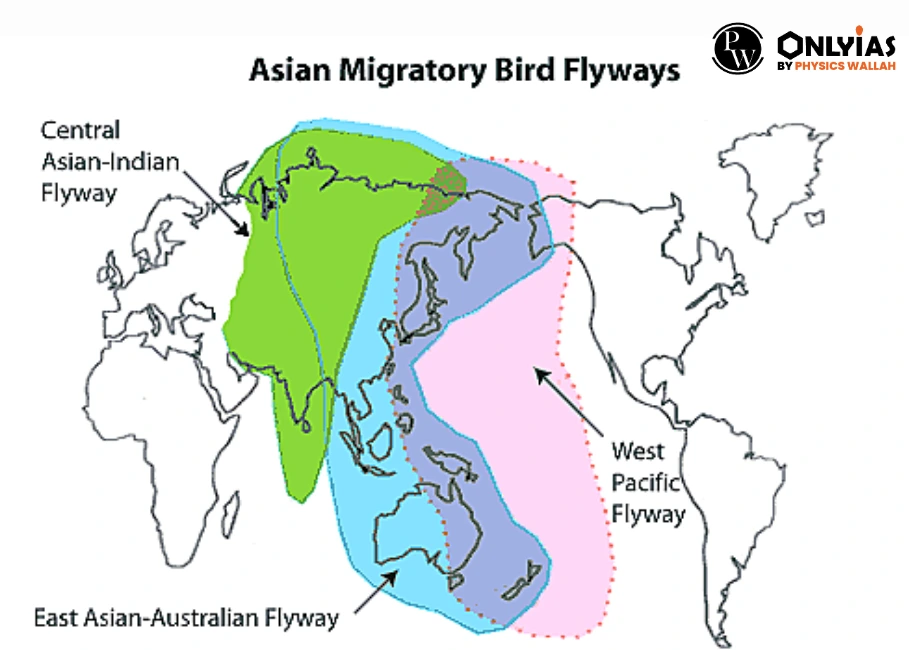Context: The Ministry of Environment, Forest and Climate Change (MoEF&CC) has submitted three nominations from India for Ramsar Wetland City Accreditation (WCA).
Indore, Bhopal, Udaipur Named For Ramsar Wetland City Accreditation Under The Ramsar Convention On Wetlands
- Nominations: The first three Indian cities nominated are Indore (Madhya Pradesh), Bhopal (Madhya Pradesh) & Udaipur (Rajasthan) under the Ramsar Wetland City Accreditation (WCA).
- The associated wetlands for the cities are:
- Sirpur Wetland (Ramsar site in Indore), Yashwant Sagar (Ramsar site closer to Indore)
- Bhoj Wetland (Ramsar Site in Bhopal)
- Five major wetlands — Pichola, Fateh Sagar, Rang Sagar, Swaroop Sagar, and Doodh Talai in and around Udaipur.
About Ramsar Wetland City Accreditation (WCA)
- Ramsar Wetland City Accreditation is an outcome of the Ramsar Convention during COP12 held in the year 2015.
- It is voluntary in nature and gives recognition to cities which have taken exceptional steps to safeguard their urban wetlands.
- Significance: It provides an opportunity to gain international recognition and branding opportunities for their efforts in conservation of wetlands.
Ramsar Convention
- It is an Intergovernmental treaty signed in 1971 at Ramsar (Iran) providing frameworks for the conservation & wise use of wetlands & their resources.
- Global Participation: As of January 2024, there are 172 contracting parties to the Ramsar Convention.
- India is one of the contracting parties and has already declared a total of 75 wetland sites under the Ramsar Convention.
- Montreux Record: It is a register of the list of those Ramsar Sites that need urgent attention and was launched in 1990.
What are Wetlands?
- As per the Ramsar Convention, “Wetlands are “areas of marsh, fen, peatland or water, whether natural or artificial, permanent or temporary, with water that is static or flowing, fresh, brackish or salt, including areas of marine water the depth of which at low tide does not exceed six meters.”
|
Some Interesting Facts About Ramsar Sites
- India’s Largest Ramsar Site: Covering approximately 11,000 square kilometers, the Sundarbans in West Bengal is India’s largest Ramsar Site. It serves as a vital habitat for the globally endangered Bengal tiger.
- Geographic Diversity of India’s Ramsar Sites: India’s Ramsar Sites showcase remarkable diversity, ranging from high-altitude locations like Tso Kar and Tsomoriri in Ladakh to coastal areas such as Chilika Lake in Odisha.
- Waterfowl Paradise: These sites provide a sanctuary for waterfowl, hosting around 180 bird species, including flamingos, pelicans, and various migratory birds.
- Dominance of Tamil Nadu: It leads among Indian states with the highest number of Ramsar Sites, boasting a total of 14 sites. This highlights the state’s dedication to preserving its wetland ecosystems.
 Ranganathittu Bird Sanctuary in Karnataka: A haven for birdwatchers, this Ramsar Site is home to diverse avian species, making it a must-visit for nature enthusiasts.
Ranganathittu Bird Sanctuary in Karnataka: A haven for birdwatchers, this Ramsar Site is home to diverse avian species, making it a must-visit for nature enthusiasts.- Ancient Keoladeo National Park in Rajasthan: Formerly known as Bharatpur Bird Sanctuary, this Ramsar Site in Rajasthan has a rich history and is renowned for its avian diversity, particularly during the winter migratory season.
- Pong Dam Lake: Situated in Himachal Pradesh, this Ramsar Site is a crucial stopover for numerous migratory birds traveling along the Central Asian Flyway.
- Urban Wetlands:Some Ramsar Sites are found in urban areas, exemplified by Thane Creek in Mumbai, highlighting the coexistence of nature and urban development.
Must Read: List of Total Ramsar Sites in India 2023
News Source: PIB
![]() 5 Jan 2024
5 Jan 2024
 Ranganathittu Bird Sanctuary in Karnataka: A haven for birdwatchers, this Ramsar Site is home to diverse avian species, making it a must-visit for nature enthusiasts.
Ranganathittu Bird Sanctuary in Karnataka: A haven for birdwatchers, this Ramsar Site is home to diverse avian species, making it a must-visit for nature enthusiasts.